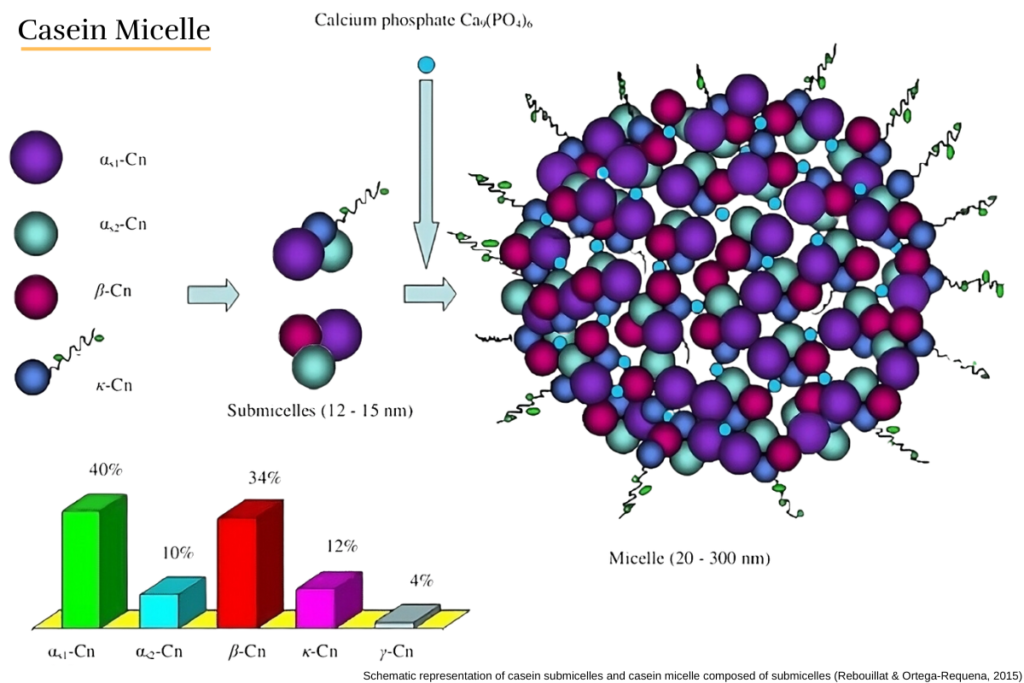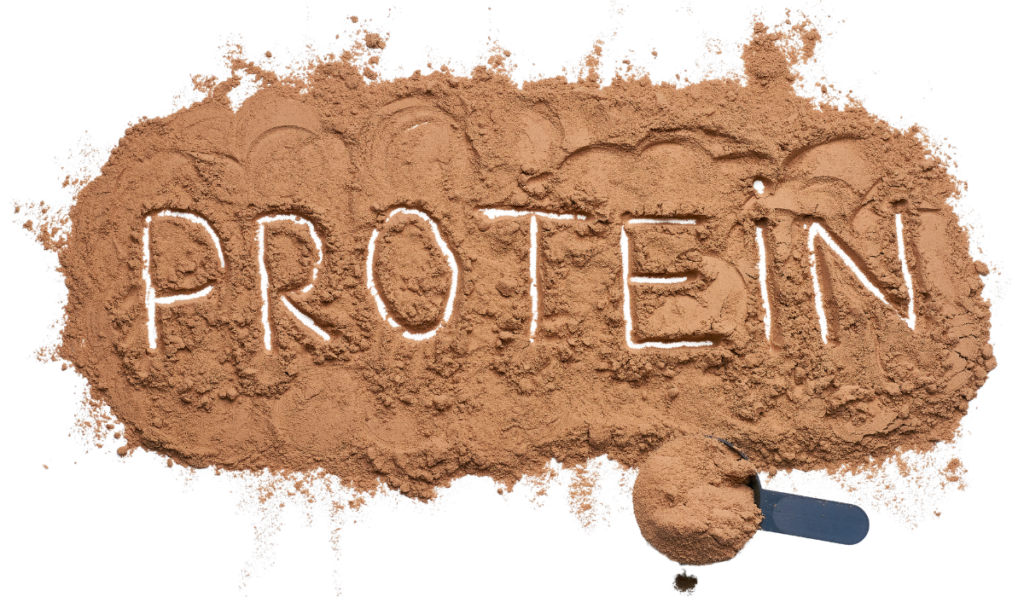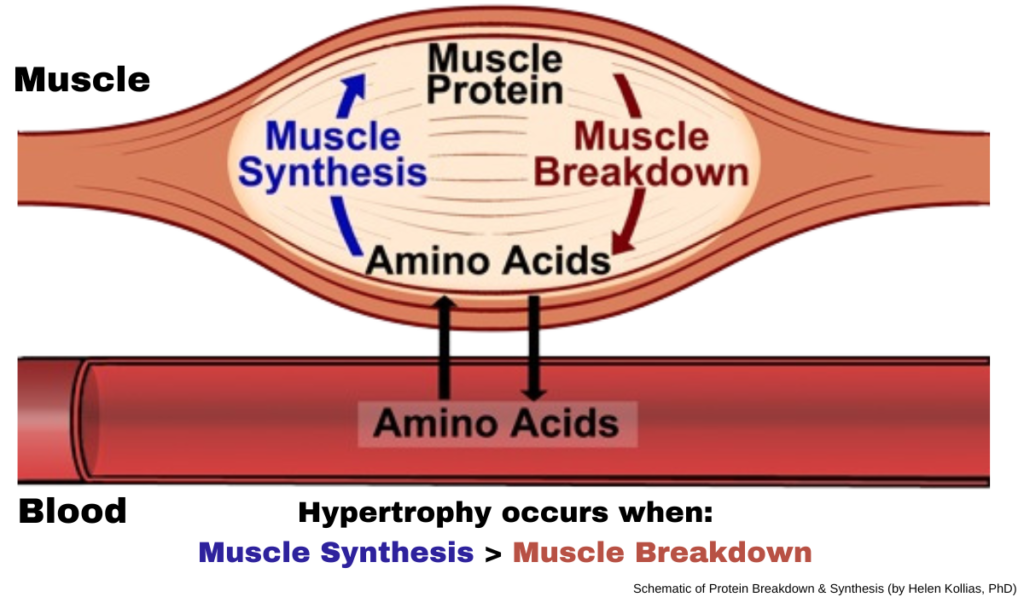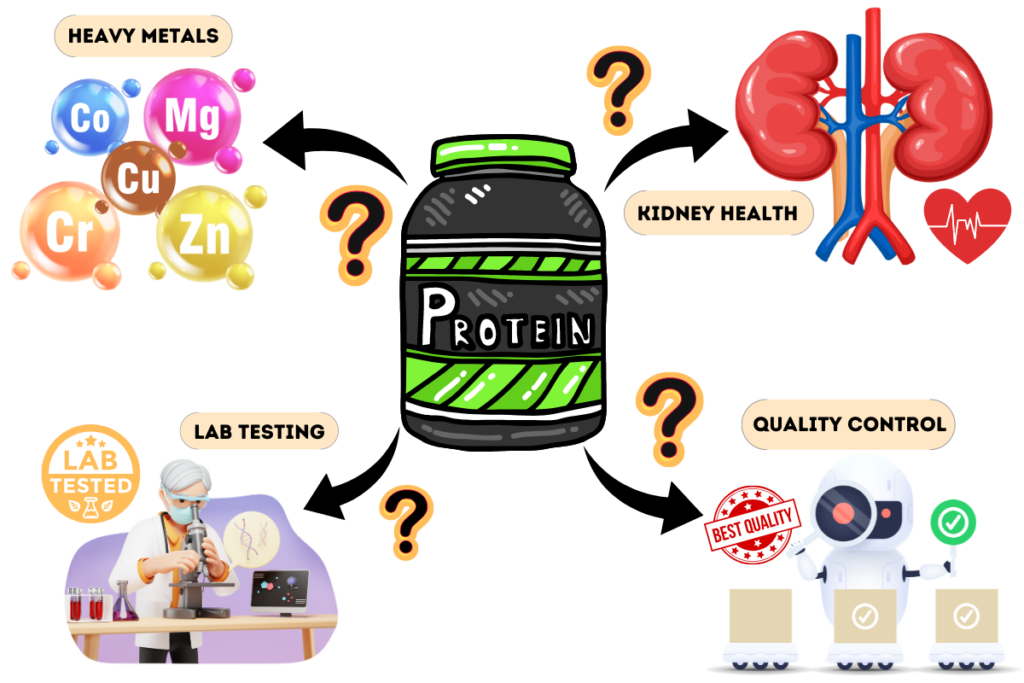
Understanding Protein Powders: Addressing Their Impact, Common Misconceptions, and Benefits
Did You Know / Feb 27, 2024 / Comments
Protein powders have become a cornerstone in the realm of nutrition, admired for their convenience and potent health benefits. Whether you’re a fitness enthusiast or simply looking to enhance your dietary intake, these supplements have gained widespread popularity. However, alongside their acclaim, various fears and misconceptions loom. Understanding protein powders is important when it comes to these supplements’ safety and quality. Let’s delve into the world of protein powders, exploring what they are, why they’ve captured the spotlight, addressing common concerns, and uncovering the multitude of benefits they offer.
A Brief History Lesson
Protein Powders, which are mainly comprised of whey and casein proteins from milk, have gained increased utilization as food ingredients over the past four decades, establishing a presence at the forefront of the evolving intersection between nutrition and health. So, what are whey and casein?
Whey: is a protein of exceptional biological value containing a high concentration of branched-chain amino acids. It comes in three types: Concentrated (comprising 70–80% protein with minimal carbohydrates and fats), Isolated (containing only trace amounts of carbohydrates and fats and boasting 90% protein), and Hydrolyzed (where protein chains are broken down into short chain peptides for quicker absorption).
Casein: This protein, constituting 80% of milk protein, holds a high biological value. In the acidic environment of the stomach, it undergoes clotting, resulting in a slower absorption process.
The practice of cheesemaking is believed to have begun around 8,000 years ago in the Fertile Crescent when people observed the separation of curds and whey in acid-coagulated milk gel. For every kilogram of cheese produced, approximately 9 liters of whey are generated. Large cheesemaking facilities can produce over 1 million liters of whey daily. Whey that wasn’t utilized for human consumption was either provided as feed for pigs or other livestock, utilized as fertilizer, or disposed of (Tunick, 2009).
While there were various iterations of protein supplements in the early 1900s, the nutritional development that, alongside steroids, initiated a revolution in bodybuilding is relatively recent. The effectiveness of protein supplementation wasn’t fully understood nor appreciated until after World War II. Key figures in the iron game promotion during the 1950s, such as Bob Hoffman, Peary Rader, and Joe Weider, played significant roles in developing, commercializing, and popularizing protein supplements. However, their public influence has overshadowed the contributions of earlier pioneers who initially conceived the idea of protein supplements (Hall & Fair, 2004).
It was only in the mid to late twentieth-century that protein powders started to gain popularity and remained so till this day.
Whey Protein Concentrate (WPI), Whey Protein Isolate (WPI), & Whey Protein Hydrolysate (WPH)

Through various filtration techniques such as ultra-filtration (UF), when applied to whey results in the selective concentration of the protein. Upon drying, this concentrated form is known as whey protein concentrate (WPC), with protein content ranging from 20% to 89%. A combination of ultrafiltration (UF) and diafiltration (DF) effectively eliminates minerals and lactose from the filtrate, enabling the production of whey protein concentrate (WPC) with a protein content exceeding 50%. Whey protein isolate (WPI) comprises a minimum of 90% protein, and nearly all lactose is eliminated. An ion-exchange tower, which segregates components based on ionic charge rather than molecular size, is frequently employed in tandem with membrane filtration (Tunick, 2009; Le et al., 2014; Chalermthai et al., 2019).
On the other hand, whey protein hydrolysate (WPH) is a pre-digested protein primarily composed of dipeptides and tripeptides, ensuring faster absorption compared to free-form amino acids and significantly quicker than intact (non-hydrolyzed) proteins (Manninen, 2004). It also forms stronger and more flexible edible films than WPC or WPI. They improve emulsification, fat binding, and whipping compared to intact WPs. Properly hydrolyzed WPHs, with suitable heat applications, serve as excellent emulsifiers. Addition of polysaccharides further enhances the emulsification ability of WPHs. WPHs contribute to improved sensorial properties like color, flavor, and texture, but extensive hydrolysis may impart a bitter taste (Chaturika et al., 2015).
If you’re looking for a few good quality protein options, then check out our Whey Protein product review.
The Composition of Whey
Extracted from Khan & Selamoglu (2019), the primary components of whey are as follows:
| Whey Component | % of Whey Protein | Benefits |
|---|---|---|
| Beta-lactoglobulin | 50-55% | Excellent source of essential and branched chain amino acids which spares muscles and glycogen during exercise. Binds fat soluble vitamins, increasing bioavailability. |
| Alpha-lactoalbumin | 20-25% | Primary protein in human breast milk. Excellent source of essential and branched chain amino acids. High in the essential amino acid tryptophan, which helps in regulating sleep, mood and stress. |
| Immunoglobulins | 10-15% | IgA, IgD, IgE, IgG ,IgM-Primarily IgG. Primary protein found in colostrum. Immune enhancing benefits to all ages, maturity, particularly in infants. |
| Glycomacropeptides | 10-15% | Does not contain amino acid phenylalanine, so is often used in infant formulas with phenylketonuria. Inhibits formation of dental plaque and cavities. |
| Bovine Serum albumin | 5-10% | Large-sized protein having good profile of essential amino acids. Fat-binding properties in the body. |
| Lactoferrin | 1-2% | As Antioxidant found in breast milk, tears, saliva and blood. Promotes growth of beneficial bacteria. Antiviral, antibacterial, antifungal. Regulates iron absorption and bioavailability |
| Lactoperoxidase | 0.5% | Inhibits growth of bacteria. |
The Less Popular But Still Popular Casein
As mentioned earlier, casein is a type of protein found in milk and dairy products. It accounts for about 80% of the total protein content in cow’s milk. Casein is often separated from whey, another milk protein, during the cheese-making process. Unlike whey, casein is a slow-digesting protein, providing a sustained release of amino acids into the bloodstream over a longer period. This property makes casein a popular choice for some individuals, especially before periods of extended fasting such as overnight, to help prevent muscle protein breakdown. It is commonly used in various protein supplements, including protein powders and protein bars
Caseins form large colloidal particles known as casein micelles. The precise structure of casein micelles remains a topic of ongoing research and discussion. The micelles are thought to consist of various casein proteins, such as αS1‐, αS2‐, β‐, and k‐casein, possess distinct primary amino acid sequences and assume specific positions within the micelle, each serving designated functions. Certain proteins play roles in transporting calcium phosphate, while others contribute to the stability of other caseins and the overall micelle structure.However, it is widely accepted that casein micelles are crucial for various functional properties of milk, including solubilization of calcium and phosphate, prevention of calcification in the mammary gland, and stabilization of the colloidal structure of milk. The complexity of casein micelles contributes to the unique properties of milk and its applications in food and dairy industries (Bhat et al., 2016).

In a scientific research article published by Kim in 2020, it explores the impact of pre-sleep casein protein ingestion on post-exercise recovery, focusing on its nutritional characteristics, effects, and potential mechanisms. Findings suggest that consuming 40-48 g of casein protein 30 minutes before sleep positively influences acute protein metabolism, exercise performance, and long-term intramuscular adaptation (muscle strength and hypertrophy). The potential mechanisms include increased plasma amino acid availability during sleep, promoting protein synthesis and inhibiting breakdown, as well as reducing exercise-induced muscle damage and inflammation. The study concludes that ingesting at least 40 g of casein protein before sleep, following evening resistance exercise, can be an effective nutritional strategy to enhance muscle recovery.
Not sure which casein protein powder to get? Don’t worry, we got you covered! Check out our Casein Protein product review.
How do Whey and Casein Compare to One Another?
While both have their advantages and disadvantages in certain criteria such as those taste/texture and absorption rate, they are both on par with each other when it comes to performance.
A study investigated the acute response of muscle protein balance to the ingestion of two different intact proteins, casein (CS) and whey (WH), after resistance exercise. Healthy volunteers were randomly assigned to three groups: placebo (PL), casein (CS), or whey proteins (WH). After completing a leg extension exercise, participants consumed their assigned drink. Leucine and phenylalanine concentrations were measured to assess balance across the leg (Tipton et al., 2005).
Here’s a tabulated summary of the key findings:
| Protein Type | Peak Leucine Net Balance | Peak Phenylalanine Balance | Net Phenylalanine Uptake |
|---|---|---|---|
| Placebo (PL) | Not provided | Not provided | -5 ± 15 mg |
| Casein (CS) | 133 ± 45 nmol.min⁻¹.100 mL⁻¹ leg | Similar to WH | 84 ± 10 mg |
| Whey (WH) | 347 ± 50 nmol.min⁻¹.100 mL⁻¹ leg | Similar to CS | 62 ± 18 mg |
The study found that both casein and whey proteins stimulated a significantly larger net phenylalanine uptake after resistance exercise compared to the placebo. The amino acid uptake relative to the amount ingested was similar for both casein and whey proteins. Despite different patterns of blood amino acid responses, the ingestion of both casein and whey after exercise resulted in similar increases in muscle protein net balance, indicating net muscle protein synthesis.
Another study compared the effects of whey isolate protein powder and casein protein powder supplementation on body composition and resting metabolic rate in physically trained, healthy individuals. Eighteen participants underwent an 8-week intervention where they either consumed whey or casein protein alongside resistance training. Pre and post testing showed no significant differences in % body fat and resting metabolic rate between the two groups. The findings suggest that whey and casein protein supplementation have similar effects on body composition and metabolic rate in physically active, healthy individuals (Peacock, 2022).
Understanding The Impact of Protein & Protein Powders
Protein, a fundamental component of our nutritional landscape, serves as the building block for various tissues, enzymes, and hormones in the human body. Comprising essential amino acids, these molecular structures are crucial for the repair, growth, and maintenance of cells. While protein can be sourced from various foods, including meats, legumes, and dairy, dietary supplements like whey protein have gained immense popularity for their convenience and concentrated protein content. Understanding the significance of protein in our diet and exploring diverse protein sources contributes to optimizing our overall health and well-being.

Protein powders have become immensely popular, especially in the bodybuilding scene, for several reasons. They offer a quick and convenient way to meet elevated protein requirements without the need for extensive food preparation. This is particularly beneficial for individuals with busy lifestyles or those aiming to consume precise amounts of protein.
For those that work out, the post-workout period is considered a critical time for nutrient intake. After a workout, the body craves a quick supply of nutrients to aid in muscle recovery. Protein is crucial for muscle repair and growth. Bodybuilders, who subject their muscles to intense training, benefit from the concentrated protein content in powders to support optimal recovery and muscle development. These powders, especially whey protein, are known for their rapid absorption, providing the necessary amino acids to muscles efficiently. Moreover, bodybuilders often follow specific macronutrient ratios to support muscle growth and fat loss. Protein powders allow for precise control over protein intake without the additional calories or macronutrients found in whole foods. They also come in a variety of flavors, making it easier for individuals to incorporate them into their diets. This variety helps avoid taste fatigue that may occur with certain whole food protein sources.
The Spectrum of Benefits
According to a research article written by Sangwan & Seth (2021), when thoughtfully chosen, these protein supplements can present a diverse array of benefits such as:
– Muscle strengthening, hypertrophy, repair
– Gut & prebiotic support
– Enhances mucosal immunity
– Reduces inflammation & oxidative stress
– Rich in antioxidants
– Anticancer support
– Reduces the risk of cardiovascular disease
– Aids in regulating blood glucose & insulin secretion
– Helps in weight management through appetite modulation

Studies Addressing Popular Fears, Concerns, and Common Myths

Despite their widespread acceptance, protein powders have not escaped skepticism. Concerns range from fears of undisclosed additives and contaminants to misconceptions about potential kidney damage due to excessive protein consumption. Yet, many of these worries are rooted in misinformation rather than concrete scientific evidence.
When it comes to any supplement on the market, you can always find dubious suppliers/brands trying to sell shady products for the sake of money. Their job is made easier when people aren’t well informed. That is why we advise you to do your own research and stick to well know brands that take their products seriously through proper quality control and testing.
One study done by Bandara et al. (2020) that addressed concerns over heavy metal presence in protein powders, finding that concentrations of arsenic, cadmium, mercury, and lead did not pose an increased health risk, with ‘mass gain’ protein powders showing higher levels than whey protein powders.
The meta-analysis done by Devries et al. (2018) aimed to assess the impact of higher-protein (HP) diets on kidney function in healthy adults. The review included 28 randomized controlled trials with 1358 participants, comparing HP diets (≥1.5 g/kg body weight or ≥20% energy intake or ≥100 g protein/day) with normal- or lower-protein intakes. The study concludes that HP intakes do not adversely affect kidney function on glomerular filtration rate (GFR) in healthy adults.
Another paper recently published by Mousa & Al-Anasri (2023) investigated the protein consumption and potential effects of whey protein supplements on liver and kidney function in 105 healthy male gym attendees in Al Nasiriyah city, Iraq. The participants were divided into two groups: those without protein supplements (group 1) and those using protein supplements (group 2). Results show that athletes generally consume protein above recommended levels, regardless of supplement use. Importantly, there is no significant difference in liver and kidney function biomarkers between the two groups, suggesting that protein supplements do not impact the liver and kidney functions of physically active gym users or athletes that is noteworthy of mentioning.
In another scientific article by Jooyandeh (2016), it explored the impact of whey protein supplements on the immune system, suggesting potential benefits such as immune system strengthening, wound healing in diabetes patients, and antioxidant activity. These findings propose the potential positive effects of whey protein in various health conditions.
Ambulkar et al. (2023) published an article in an aim to evaluate the effectiveness and safety of protein supplements in promoting health and well-being in healthy adults. Conducted as a double-blind, multi-center, randomized, placebo-controlled clinical trial with 60 participants over 90 days, the research found that the protein supplement given to the test group significantly enhanced quality of life, aerobic capacity (VO2 max), and distance covered in six minutes. Moreover, it led to a reduction in body weight, waist circumference, body mass index, hip circumference, and body fat. Notably, improvements in digestive and sleep quality scores were observed, with no clinically significant changes in hematological, biochemical, and vital parameters, confirming the safety and efficacy of the protein supplement. The results are displayed below:



Now you may be wondering what is GHQ-28? All participants completed the GHQ-28 questionnaire, a validated tool assessing psychosomatic symptoms and offering insights into overall quality of life. The questionnaire covered four domains: somatic symptoms, anxiety and insomnia, social dysfunction, and depressive symptoms. Participants self-scored responses on a scale from 0 to 3, representing lower to higher disability. Mean scores for all questions, as well as the four sub-sections and the total GHQ score, were calculated. The treated group exhibited significantly greater enhancement in general health and overall well-being across all four domains compared to the placebo group. A decrease in scores from baseline indicated an improved quality of life, with the treatment group showing an incredible 85.76% improvement in the total quality-of-life score, while the placebo group demonstrated a 28.47% improvement.


Keep in mind that the results for the anthropometric parameters did not include any proper focus on what the participants ate, but with that being said, we can clearly see an improvement in the test group, while the placebo group stayed pretty much the same.
Couple that with a proper catered diet and you got yourself a recipe for success whether it’s in muscle building or in fat loss.
General Safety
We always reiterate this for general safety concerns, but people who already have medical issues, especially those that concern the kidneys or stomach, should seek out the professional advice of doctors before buying dietary supplements. Safety first guys!
What to Take from All This?
Protein powders have emerged as versatile nutritional supplements, offering a convenient and efficient means to meet increased protein requirements. Whether utilized by athletes aiming to enhance exercise performance, individuals seeking muscle growth, or those with specific health goals, protein powders provide a concentrated and easily digestible source of essential amino acids. The diverse types, such as whey, casein, and plant-based options, cater to varied dietary preferences. While these supplements exhibit potential benefits in muscle strengthening, immune support, and antioxidant actions, it is crucial to emphasize the importance of choosing high-quality products to ensure purity and effectiveness. Furthermore, individual needs, health conditions, and fitness objectives should guide the selection and consumption of protein powders. As with any dietary supplement, moderation and informed decision-making remain key aspects of achieving optimal health outcomes.
If you liked this article, you can check out our other Did You Know? articles.
Consider checking out some of our product reviews Dietary Supplements/Diet Plans/Programs & Gear.
If you have any questions, you can contact us here.
